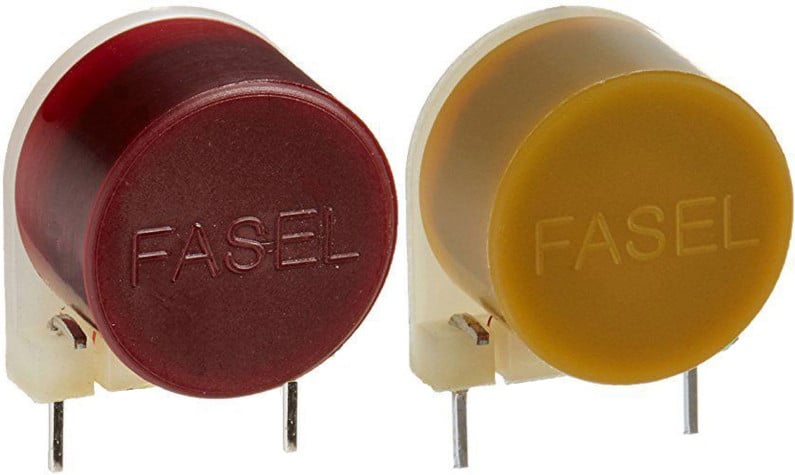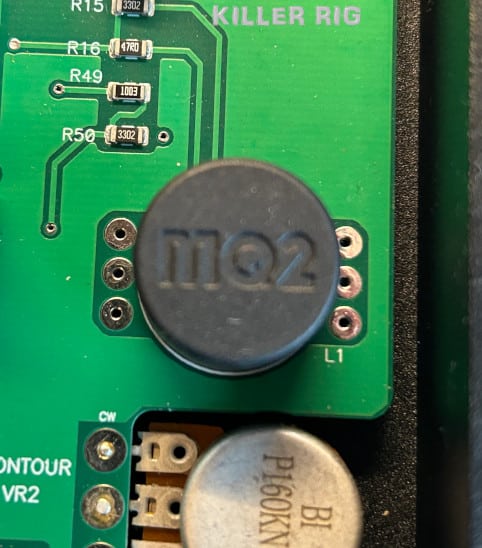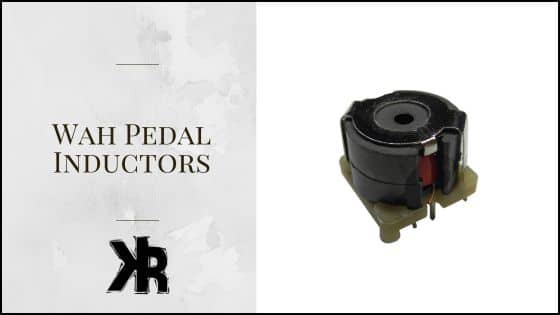Table of Contents
Wah pedal inductors are a crucial aspect that contributes to the device’s unique sound characteristics. These components play a significant role in shaping the frequency response of the pedal, allowing guitarists to achieve the distinct wah effect.
By altering the inductance value, players can manipulate the sweep range and intensity of the effect, resulting in a versatile tool for expression and creativity in guitar playing.
It is fascinating to note that different wah pedal models utilize various types, such as the Fasel inductors, which are renowned for their warm and vintage tone.
Wah Inductor Summary
- The inductor is a crucial component in the wah circuitry, as it affects the frequency response and shape of the effect.
- There are various types of inductors used in wah pedals, such as the Halo, MQ2, and Fasel inductor. Each type has its own characteristics and can alter the overall sound and feel of the wah effect.
- The choice of inductor can greatly impact the overall tone and response of a wah pedal. Experimenting with different inductors allows guitarists to personalize their wah sound and find the perfect fit for their playing style and musical preferences.
How a Wah Pedal Works
The functionality of a Wah pedal can be explained in the following manner. When a guitarist steps on the pedal, it activates a potentiometer that alters the frequency response of the guitar signal, creating a sweeping effect.
This adjustment is achieved through the movement of a rocker foot pedal that controls the position of a wiper on the potentiometer.
As the guitarist rocks the pedal back and forth, the potentiometer varies the cut-off frequency of a band-pass filter, emphasizing different frequencies and producing the characteristic Wah sound.
The position of the pedal determines the cut-off frequency, allowing the guitarist to control the desired effect. The inductor used in the Wah pedal plays a crucial role by influencing the frequency response. Different types of inductors can produce varying Wah tones.
It is worth noting that the inductor functions by storing magnetic energy, which in turn affects the filtering characteristics of the pedal.
To optimize the Wah effect, guitarists can experiment with the position and type of inductor in their pedal setup.

The Function of the Inductor
An inductor plays a crucial role in a wah pedal’s function. It acts as a filter, allowing only specific frequencies to pass through and shaping the guitar’s tone.
By adjusting the position of the wah pedal, the musician changes the resistance in the circuit, which, along with the inductor, affects the Q factor. This controls the sharpness of the resonance peak in the sound, allowing specific frequencies to be emphasized or attenuated.
The interaction between the inductor and other components in the pedal creates the characteristic wah effect. Let’s look at the science behind it:
- Filtering and Resonance: The inductor acts as a resonant filter, allowing specific frequencies to pass through while attenuating others. This filtering effect is what shapes the characteristic “wah” sound.
- Adjusting the Q Factor: By manipulating the wah pedal, the musician changes the inductor’s Q factor, which controls the sharpness of the resonance peak. A higher Q factor leads to a more pronounced peak, emphasizing certain frequencies, while a lower Q factor broadens the peak, affecting a wider range of frequencies.
- Energy Storage: Inductors store energy in the form of magnetic flux. In a wah pedal, this energy storage interacts with the circuit’s resistance and capacitance to create a resonant frequency. This resonant frequency is what the musician manipulates to create the wah effect.
- Inductor Types and Materials: Different inductors can have different effects on the sound. The core material, winding method, and other physical characteristics of the inductor can significantly influence the tone of the wah effect.
- Interaction with Other Components: The inductor doesn’t work in isolation. It interacts with other components like resistors, capacitors, and potentiometers in the wah pedal’s circuit. Understanding this interaction is key to fully grasping how the inductor shapes the sound.
- Potential Losses: Real-world inductors are not ideal and may have losses due to resistance in the windings and other factors. These losses can affect the Q factor and, consequently, the sound of the wah effect.
Types of Wah Pedal Inductors
Different inductor types are used in wah pedals to create unique tonal characteristics. Let’s take a closer look at the various inductor types commonly found in wah pedals.
| Inductor Type | Description |
|---|---|
| Yellow Fasel | Known for its warm and vintage tone. |
| Red Fasel | Offers a bright and expressive sound. |
| Halo | Provides a smooth and versatile response. |
| Morley MQ2 | Gives a distinct voice with low EMF noise. |
Each inductor type has its own sonic qualities, allowing guitarists to achieve their desired wah tone. Experimenting with different inductor types can help you find the perfect sound for your playing style.
Pro Tip: When choosing an inductor for your wah pedal, consider your musical preferences and the genre you play. Try out different inductor types to find the one that complements your playing style and enhances your overall sound.
Fasel Inductors: Red Vs Yellow

Red and yellow Fasel inductors have slight differences in their sound characteristics. The red version tends to have a deeper tone and stronger emphasis on the fundamental frequency, while the yellow model has a smoother-sounding sweep.
Many guitarists associate the yellow Fasels with a more vintage sound, while the red ones sound more modern. However, it’s important to note that the tolerances of Fasels can vary, so no two inductors of the same color will sound exactly alike.
Halo Inductor
The Halo inductor is renowned for its smooth response and classic tone, often associated with the iconic vintage wah sounds of the 1960s. Its unique construction minimizes microphonic noise, providing a clean and articulate wah effect that has made it a favorite among many guitarists.
The Halo inductor’s ability to replicate the sought-after vintage wah characteristics has led to its use in various reissue and boutique pedals.
Its versatility and response make it suitable for different musical styles, from blues and rock to funk, allowing musicians to achieve that timeless wah sound with ease.
Morley MQ2 Inductor

The Morley MQ2 inductor is a custom-designed component specifically engineered for low electromagnetic interference (EMF) noise. It provides a distinct voice that’s clear, responsive, and modern, making it suitable for various musical genres.
Unlike traditional inductors, the MQ2 emphasizes clarity and precision, giving guitarists more control over their wah effect. Its design ensures a consistent performance, free from the hum and noise that can sometimes plague other inductors.
The MQ2’s unique characteristics have made it a key feature in Morley’s line of wah pedals, offering musicians a fresh and innovative approach to the classic effect.
Its low EMF noise and distinct tonal qualities set it apart as a valuable tool for those seeking to explore new sonic territories with their wah pedal.
Inductance and Its Effect on Sound
Inductance, measured in henries (H), is a fundamental property of an inductor that plays a vital role in shaping the sound of a wah pedal. It refers to the ability of the inductor to store magnetic energy, and it directly influences the resonant frequency of the circuit.
A higher inductance value (more henries) generally results in a lower resonant frequency, creating a deeper and more bass-heavy wah effect. This can add warmth and richness to the sound, making it suitable for blues or classic rock styles.
Conversely, a lower inductance value (fewer henries) will raise the resonant frequency, leading to a brighter and more treble-focused sound. This can emphasize the higher frequencies, adding sharpness and clarity, which might be preferred in genres like funk or modern rock.
The choice of inductance in a wah pedal is not merely a technical consideration; it’s a musical one. By selecting an inductor with the right inductance value, guitarists can tailor the wah effect to their playing style and the genre they are performing.
Manufacturers often experiment with different inductance values to create unique sounding wah pedals. Some even offer adjustable inductance to provide musicians with greater control over their sound.
To date, most wah pedals are found with inductors that measure 450 to 550mH. Although 500mH seems to be the sweet spot when it comes to the sound of a great wah tone.
Conclusion
The findings regarding Wah Pedal Inductors suggest that they play a crucial role in shaping the tone and characteristics of the effect. These inductors greatly impact the overall sound quality and responsiveness of the pedal.
Understanding the significance of these components allows musicians and enthusiasts to make informed decisions when selecting or modifying their wah pedals.
Exploring the various types of inductors available and their sonic characteristics can help individuals achieve their desired wah sound.
While this information provides a deeper understanding of the importance of inductors, it is essential to remember that personal experimentation and preference ultimately play a significant role in crafting the perfect wah tone.
FAQs
Are modern wah pedals made with stack of dimes inductors?
Few modern pedals are made with stack of dimes inductors. And, the original stack of dimes inductors are hard to find. However, modern versions do exist.
For example, Arteffect Audio makes both halo and stack of dime inductors. Their Bonnie Wah pedal features a halo-style inductor, but they do not currently offer one that uses their stack of dimes.
What is the TDK 5103 inductor used in?
The TDK 5103 inductor is a dark reddish brown rectangular box that appeared in some Thomas wahs and was also used in Vox’s King pedal.
Opinions on the sound of the TDK 5103 inductor vary widely among guitarists. Some dislike it, while others find it warm and vocal. Currently, there are no known modern wah pedals that use the TDK 5103 inductor.

